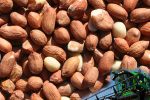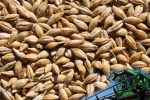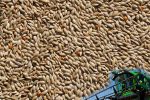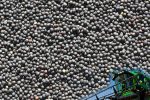{gallery}bird-images/housesparrow:170:170:0:0{/gallery
Identification
Male House Sparrows are easily recognised by their grey crowns and variably-sized black bibs but females might be more difficult. However, nearly all the other dull brown birds with thick, conical bills have streaked rather than plain underparts. Even the otherwise similar Spanish Sparrow is faintly streaked below. Pale Rock Sparrows and Yellow-throated Sparrows are unstreaked below but they also have plain upperparts, quite unlike a House Sparrow. The only remaining problem species is the Dead Sea Sparrow which looks very similar but is smaller and neater.
Habitat
Breeds and winters in towns and cities, and also on farmland.
Behaviour
Before copulation can take place, the male has to perform a 'dance' in which he repeatedly encircles the female, crouching forward with his feathers fluffed up and chirping constantly. Then the female bows forward to allow mating to take place and this is followed by more of the same display until the pair mate again. This can be continued for many minutes during which time the pair will copulate repeatedly.
Migration
Mainly sedentary although some juveniles in colder climes will migrate south and south-west.
For more details click here








 What you feed is very important, there is a huge range of products you can feed
What you feed is very important, there is a huge range of products you can feed